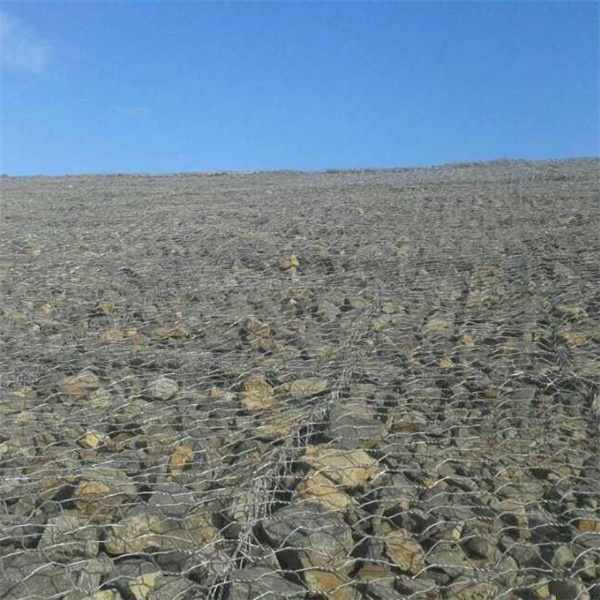Dhj . 17, 2024 23:42 Back to list
gabion basket fill material manufacturer
Understanding Gabion Basket Fill Materials A Guide for Manufacturers and Users
Gabion baskets have emerged as a versatile solution in various engineering and landscaping projects due to their strength, durability, and environmental benefits. These wire mesh containers, filled with stones or other suitable materials, are commonly used for erosion control, ground stabilization, and decorative purposes. With the increasing demand for gabion baskets, the importance of choosing the right fill material cannot be overstated. This article explores different types of fill materials used in gabion baskets, highlighting the role of manufacturers in ensuring quality and performance.
The Role of Gabion Baskets
Gabion baskets are primarily used in civil engineering and landscape architecture. They provide structural stability, encourage vegetation growth, and blend with the natural environment. Whether used in retaining walls, riverbank protection, or decorative features, gabions offer a sustainable and cost-effective solution.
Types of Fill Materials
1. Natural Rock The most common fill material is natural rock, which can range from granite to limestone. The choice of rock often depends on local availability and project requirements. Natural rocks are favored for their durability and ability to withstand environmental pressures.
2. Recycled Materials With a growing focus on sustainability, recycled materials, such as crushed concrete or recycled glass, are gaining popularity as fill options. These materials not only reduce waste but also offer unique aesthetic qualities when used in landscape projects.
3. Gravel and Stones Smaller gravel and aggregate stones are often used for lighter applications. They facilitate drainage while maintaining structural integrity. Additionally, these materials can be sourced locally, reducing transportation costs.
4. Manufactured Products Some projects may benefit from specialized manufactured materials. These can include synthetic stones or engineered aggregates designed to meet specific aesthetic or performance criteria. Companies that manufacture gabion baskets may also offer proprietary fill materials suited for certain applications.
5. Soil and Vegetation In certain landscape applications, gabion baskets may be filled with soil and planted with vegetation. This approach encourages green infrastructure, promoting biodiversity and enhancing aesthetic appeal.
Factors to Consider When Choosing Fill Materials
gabion basket fill material manufacturer

When selecting fill materials for gabion baskets, several factors should be taken into account
- Waste Management Choosing recycled materials can contribute to waste reduction goals and environmental sustainability. Manufacturers should promote the use of eco-friendly options to their clients.
- Local Availability Sourcing materials locally can significantly cut costs and reduce the carbon footprint associated with transportation. Manufacturers should develop partnerships with local suppliers to enhance their offerings.
- Aesthetic Qualities The appearance of fill materials may impact the overall design of a project. Manufacturers need to consider how different materials complement the surroundings, as well as any potential weathering effects over time.
- Environmental Impact Understanding the environmental implications of different fill materials is crucial. This includes evaluating their effect on local ecosystems and ensuring compliance with environmental regulations.
- Technical Performance Manufacturers must provide clients with data on the performance characteristics of various fill materials. This includes load-bearing capabilities, durability, and drainage properties.
The Manufacturer's Role
Manufacturers play an essential role in the gabion basket supply chain, not only in producing high-quality baskets but also in offering guidance on fill material selection. They can provide valuable insight into the performance attributes of different materials, helping clients make informed decisions.
Moreover, manufacturers can emphasize the importance of quality control in sourcing fill materials. Ensuring each batch meets the required standards enhances the longevity and effectiveness of the gabion structure. Additionally, offering a range of fill material options allows manufacturers to cater to diverse project needs and client preferences.
Conclusion
Gabion baskets are a practical solution for many engineering and landscaping challenges, and the choice of fill material is critical to their success. As demand grows, manufacturers must stay informed about emerging trends and technologies in fill materials while promoting sustainable practices. By providing quality products and expert advice, gabion basket manufacturers can contribute to the successful implementation of durable, efficient, and environmentally friendly solutions in various projects.
-
Visualizing Gabion 3D Integration in Urban Landscapes with Rendering
NewsJul.23,2025
-
The Design and Sustainability of Gabion Wire Mesh Panels
NewsJul.23,2025
-
The Acoustic Performance of Gabion Sound Barriers in Urban Environments
NewsJul.23,2025
-
Mastering the Installation of Galvanized Gabion Structures
NewsJul.23,2025
-
Gabion Boxes: Pioneering Sustainable Infrastructure Across the Globe
NewsJul.23,2025
-
Custom PVC Coated Gabion Boxes for Aesthetic Excellence
NewsJul.23,2025
-
Installation Tips for Gabion Wire Baskets in Erosion Control Projects
NewsJul.21,2025






